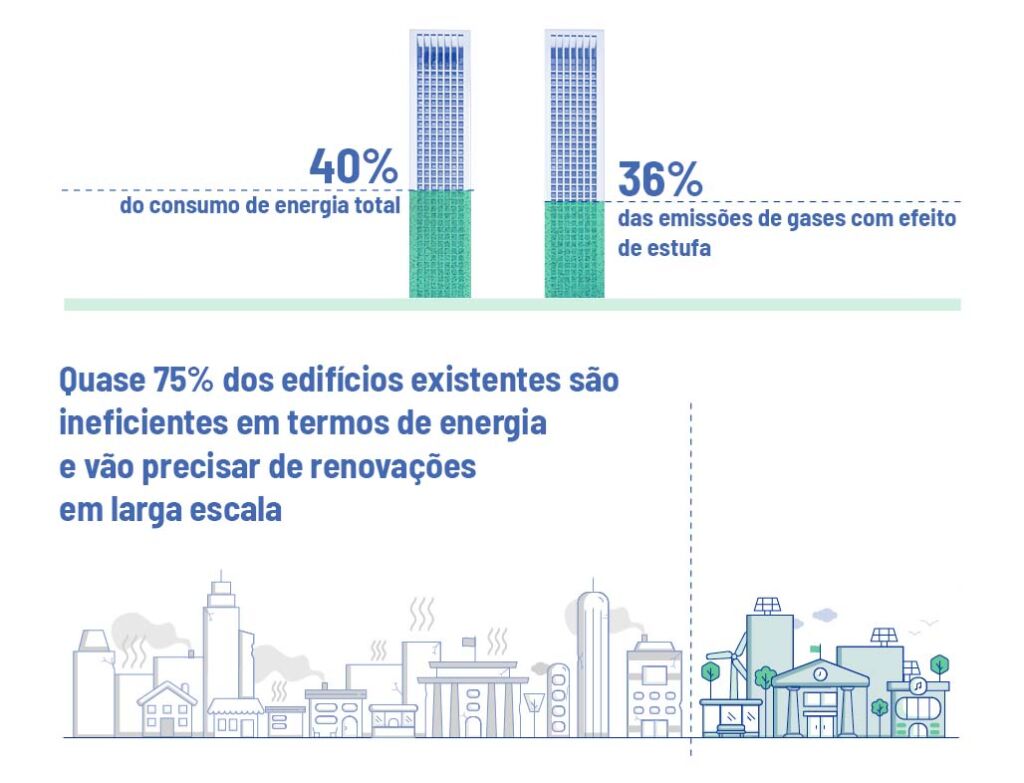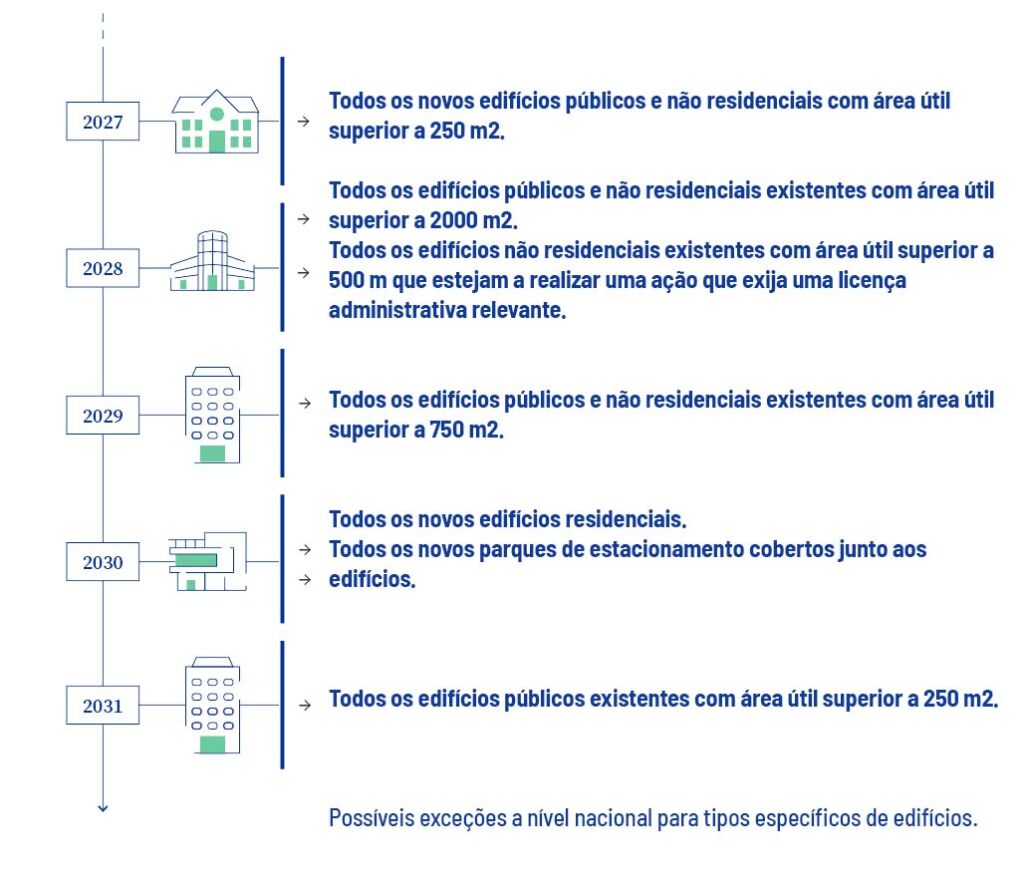Energy Performance of Buildings Directive
Imagine a world where buildings breathe efficiency. Not literally, but in terms of energy performance, where every wall, window and roof contributes to a sustainable ecosystem. This is the reality that the European Union’s Energy Performance of Buildings Directive (EPBD), a key element in the fight against climate change and on the road to a greener, more sustainable future, aims to bring about.

The EPBD's raison d'être
Buildings are responsible for around 40 per cent of total energy consumption and 36 per cent of CO2 emissions in the European Union. The EPBD aims to transform this reality by requiring all new buildings to be near-zero emission buildings (nZEB) from 2030 and buildings occupied or owned by the public sector to reach this target by 2028. In addition, the directive establishes that existing buildings must improve their energy efficiency, with specific targets for renovating the worst performing buildings by 2030 and 2033.
Technology at the Service of Sustainability: Innovations that Shape the Future
The EPBD is not just a directive; it is a catalyst for innovation. From advanced insulation solutions to intelligent heating and cooling systems, technology is at the forefront of this transformation.
1. state-of-the-art insulation
Traditional insulation is being replaced by innovative materials such as aerogel and vacuum insulation. These materials offer superior thermal efficiency and are more durable and environmentally friendly. The use of aerogel, for example, can reduce heat loss by up to 50 per cent.
2. Energy Management Systems
Smart buildings are emerging, equipped with energy management systems that monitor and optimise energy consumption in real time. These technologies use data to automatically adjust lighting, air conditioning and other systems, resulting in a significant reduction in energy consumption and CO2 emissions. WiseBuilding offers advanced energy monitoring and optimisation solutions that enable more efficient management of resources.
3. Integrated Renewable Energy
The integration of renewable energies is another fundamental pillar of the EPBD. Photovoltaic solar panels, small-scale wind turbines and geothermal energy systems are being incorporated directly into construction projects. In 2020, around 32 per cent of the energy consumed in EU residential buildings came from renewable sources.

Implementing the EPBD is not without its challenges. The diversity of the European property stock, which includes both historic buildings and modern constructions, requires adapted and flexible approaches. However, these challenges also present unique opportunities for innovation and the development of customised solutions.
1. Renovation of Historic Buildings
Although it has previously been confirmed that Member States can exempt heritage buildings from these rules, the heritage sector should not shy away from helping to build a sustainable future for Europe. New techniques, such as the use of compatible materials and invisible technologies, are emerging as viable solutions. One notable example is Notre-Dame Cathedral in Paris, which, after the 2019 fire, is being restored with technologies that will increase its energy efficiency.
2. Financing and Incentives
The cost of energy improvements can be a significant obstacle. There are currently several funding programmes and incentives in the European Union. The Horizon 2020 programme made 5.7 billion euros available for energy efficiency projects between 2014 and 2020. In addition, the Portugal’s Recovery and Resilience Fund offers 295 million euros to support energy renovations, with a focus on residential and public buildings. In 2024, the gradual phase-out of subsidies for fossil fuel boilers will begin, encouraging the adoption of cleaner technologies.
3. Education and Awareness
Raising awareness of the importance of energy efficiency is crucial. Campaigns such as the European Commission’s “Renovation Wave” aim to double the annual renovation rate of buildings by 2030. In Portugal, the Environmental Fund promotes educational and training programmes for building managers and professionals in the construction sector, ensuring that best practices are adopted.
A Sustainable Future: The Impact of the EPBD on the Next Generations
The EPBD is not just a directive, it is a vision for the future. By changing the way we build and renovate our buildings, we are ensuring a healthier and more sustainable environment for future generations. This positive impact is already visible: since 2010, the energy intensity of buildings in the EU has fallen by around 1.5% per year.
But the revolution doesn’t stop there. As technologies evolve and legislation adapts, the EPBD will continue to be a driver of change, pushing us towards a future where buildings not only provide shelter, but also protect our planet.
How prepared is your building for this energy revolution?
References and Sources
1.European Commission. (2023).
Energy performance of buildings directive.
Disponível em:
Energy Performance of Buildings Directive
2.European Commission. (2024). Europe’s industrial revolution for efficient buildings. Disponível em: Sustainable Energy Week
3.European Commission. (2022). Energy Efficiency in residential buildings. Disponível em: Energy Efficiency
4.National Geographic. (2020). Notre-Dame: After the fire, rebuilding a French icon. Disponível em: National Geographic
WiseBuilding® is technically qualified to support any project involving the integration of GTC/SACE, IoT, automation and energy management systems and is highly committed to helping building owners and managers meet their EPBD targets. Contact us today.
WISEFRAMEWORK is a BACnet B-AWS certified software solution for state-of-the-art integration, control, management and visualisation in building automation systems. Designed to redefine the way buildings are operated through an open platform and seamless harmonisation between building-generated data by supporting multiple protocols including BACnet, Modbus, KNX, OPC-UA and MQTT. Through the use of Haystack technology, the software also empowers the building for the future at the forefront in the integration of the various technical systems.


